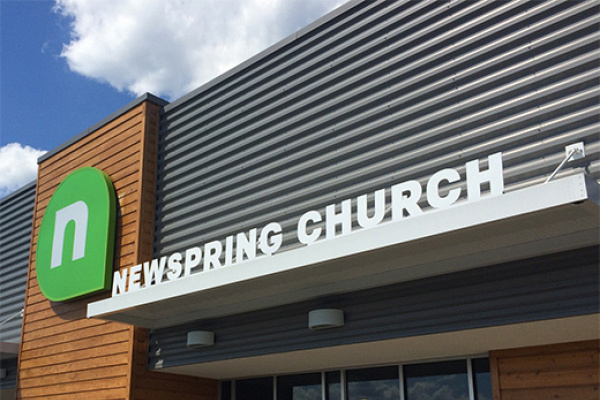The Chicken of the Sea: A Modern Tale of Fear, Failure, and Cowardice
The sight of the giant cruise ship Costa Concordia listing in the deadly embrace of the sea is a now a graphic symbol of failure. Its timing is absolutely eerie, coming so close to the 100th anniversary of the sinking of the Titanic. But, unlike the Titanic, this disaster did not take place in the middle of the ocean, far from the range of observation. The Costa Concordia appears to be almost touching the rocky Italian coastline. The digital revolution ensures that we are all able to see the wreck of the ship in living color.
And then came the story. It appears that Captain Francesco Schettino deliberately took the Costa Concordia off its assigned course in order to bring the giant vessel dangerously close to the Tuscan coastline so that a crew member could greet his family. During the maneuver, the ship hit a submerged outcropping of rock, tearing a massive hole in the hull. Within seconds, the Captain knew the ship was in trouble, and he brought the fast-sinking ship to rest on a reef, listing heavily on its starboard side.
Within minutes, local authorities launched a rescue operation. Thankfully, the accident took place close to shore, and the captain had been able to crash the ship onto the reef, preventing it from fully sinking. Nevertheless, massive portions of the ship’s interior space quickly filled with the cold and dark water. The death toll could rise to as many as 40 or more. As of Wednesday night, eleven deaths had been confirmed, and another 24 passengers and crew remained missing. Authorities cited movement of the vessel and conditions on board as an indication that further rescues were unlikely.
A flood of questions immediately surfaced. Why had the captain deliberately taken the ship off its course? What sane captain would bring a massive $450-million vessel with 4,200 passengers and crew into such clearly dangerous waters? Once the ship was compromised, were standard lifesaving practices followed?
All of those questions were swirling about when a stunning development exploded its way into the conversation. An Italian newspaper, Corriere della Sera, obtained and released a recording of the Italian Coast Guard communicating with Captain Schettino after the accident. That conversation is sure to become part of maritime lore for generations to come.
The recording makes clear that Captain Schettino abandoned his ship long before most passengers were rescued. Captain Gregorio De Falco of the Italian Coast Guard had discovered that Captain Schettino was not on board his ship, but in a rescue boat. Captain De Falco ordered Schettino to return to his ship and command the rescue operation: “Schettino? Listen Schettino. There are people trapped on board. Now you go with your boat under the prow on the starboard side. There is a pilot ladder. You will climb that ladder and go on board. You go on board and then you will tell me how many people there are. Is that clear? I’m recording this conversation, Cmdr. Schettino…”
Captain De Falco continued:
“You go up that pilot ladder, get on that ship and tell me how many people are still on board. And what they need. Is that clear? You need to tell me if there are children, women or people in need of assistance. And tell me the exact number of each of these categories. Is that clear? Listen Schettino, that you saved yourself from the sea, but I am going to… I’m going to make sure you get in trouble. …I am going to make you pay for this. Go on board, (expletive)!”
Captain Schettino repeatedly refused to return to his ship, insisting that he was “here to coordinate the rescue.”
Captain De Falco then ordered: “You go aboard. It is an order. Don’t make any more excuses. You have declared ‘abandon ship.’ Now I am in charge. You go on board! Is that clear? Do you hear me? Go, and call me when you are aboard. My air rescue crew is there.”
Over time, Captain De Falco grew increasingly angry with Captain Schettino’s cowardly refusal to go back to his own ship. “You want to go home, Schettino?,” he asked in exasperation. “It is dark and you want to go home? Get on that prow of the boat using the pilot ladder and tell me what can be done, how many people there are and what their needs are. Now!”
Italian authorities later confirmed that Captain Schettino never returned to the vessel, even when he was told that passengers remained in danger and some bodies had already been found.
Across Italy, a stunned nation listened to the recorded conversation as it was broadcast by Italian media. Within an hour, the recording was available in English and a host of other languages - a transcript of shame that was so shocking it seemed to be fiction. But it was fact.
Captain Schettino was arrested within hours of the wreck, and he is likely to face criminal charges including manslaughter and abandoning his ship. Authorities quickly blamed Schettino for the accident, once it was confirmed that he had ordered the ship to leave its assigned course and when he was confirmed to have been in control of the vessel when the accident occurred.
What are we to do with Captain Schettino? He will go down in history as an example of miserable failure, dereliction of duty, radical cowardice, and the collapse of manhood. He failed to do what any man in his position would be expected to do. He even refused a direct command to take up his duty, once he had abandoned it.
We are left with the tragic picture of a frightened man who abandoned his post when he was most needed, and consigned over 4,200 human beings in his care to the dark water.
It is a portrait of moral collapse and the forfeiture of manhood.
Thankfully, this was not the only picture to be seen. Manrico Giampedroni, a 57-year-old crew member aboard the Costa Concordia devoted himself fearlessly to the rescue of passengers, returning to the listing ship again and again to find them and return them to safety. He stopped only when he badly fractured his leg and had to be rescued himself. Francis Servel, who attempted to flee the boat with his wife, Nicole, discovered that there was only one life jacket. He put it on his wife, and that was her last sight of him. “I owe my life to my husband,” she said.
The Merchant Marine Officers’ Handbook states what is expected of a ship’s master, or captain. The first responsibility cited is this: The master is to be “the last man to leave the vessel.”
Captain Schettino first told the Italian authorities that he had not abandoned his ship. He than changed his story to say that he had slipped and fallen into the rescue boat.
Among the monuments on the grounds of the United States Naval Academy at Annapolis, Maryland is a massive granite marker dedicated to the memory of Commander William L. Herndon. In 1857, Commander Herndon was in command of the commercial vessel Central America, under assignment to the United States government, when it ran into hurricane force winds. Commander Herndon gave everything he had to the rescue of those in his care. He evacuated 31 women and 28 children before the ship sank into the stormy waters off Cape Hatteras, North Carolina. He gave his watch to one of the women and asked her to get it to his wife, explaining that he could not leave the ship while anyone remained on board.
Survivors told of seeing Commander Herndon go down with his ship, cigar chomped in his teeth, his head bowed in prayer - a portrait of courage, devotion to his charge, and defiance of fear. Two U. S. Navy vessels have since been commissioned in his memory.
Here we face two radically different men, who made radically different decisions. The decisions we make in the present will determine the kind of decision we would make in the future if we were to face the same challenge. Nothing less than the moral order of the universe is at stake when we consider the difference between Commander Herndon off Cape Hatteras and, off Italy, the Chicken of the Sea.






















